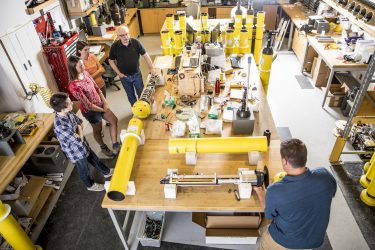
The water circling Antarctica has some of the roughest, most dangerous conditions on the planet. It also stores a massive amount of carbon dioxide, supports marine life and connects to all major ocean basins. To learn how these waters work, UW oceanographers are sending robots to monitor conditions too dangerous or expensive for research ships to visit regularly.
“The Southern Ocean is taking up a sizable fraction of all the atmospheric CO2 that goes into the ocean. But we know very little about the Southern Ocean, especially under the ice,” said Stephen Riser, a professor of oceanography.
His group has built Argo ocean-monitoring floats since 1999, and still builds about 120 per year for several international efforts. The hardy, low-power robots cruise through the world’s oceans collecting observations. The group is now in the middle of its toughest mission yet — a $21 million, six-year National Science Foundation-funded project to build broader, longer Southern Ocean SOCCOM floats that measure oxygen, pH, chlorophyll, and nitrate to track ocean acidification, carbon uptake and subsurface plankton blooms.
Read more at UW Today »
